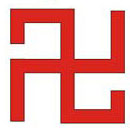

 In popular western thinking, no two symbols could possibly be more at odds with each other than the swastika and the cross. The swastika is the symbol of Nazi war crimes against humanity and the cross is the symbol of goodness, mercy and divine grace.
In popular western thinking, no two symbols could possibly be more at odds with each other than the swastika and the cross. The swastika is the symbol of Nazi war crimes against humanity and the cross is the symbol of goodness, mercy and divine grace.
But what if this isn’t true?
It all depends on where you live and what you know. If you live in Germany, for example, displaying a swastika [the old reminder of World War II atrocities] will put you in jail on criminal charges. But if you live in India or other parts of Asia, then it’s hard to go thru a normal day in life and not see a swastika, the old reminder of prosperity, auspiciousness and “good luck.” Indeed, the swastika is often called the Hindu or Buddhist cross.
In ancient antiquity the swastika, as a religious and harmonious symbol, was popular in the east as far as China and Japan and in the west its use spread from Persia [Afghanistan, Iran, Iraq, Syria and Turkey] across Europe and even reached the Americas. Thus the swastika is known to have been in use across the ancient [and modern] world as a benevolent symbol.
But there is a movement in Western Europe to ban the use or display of the swastika throughout the European Union. This is already law in Germany and Austria. However, most people would be surprised to learn that in western countries, prior to World War II, the most popular symbol for prosperity, wealth, health, safety, auspiciousness and good luck was the swastika.
In case some of our readers are not aware of the use and historical importance of the swastika in western civilization, lets take a look at some of the more explicit ways and places the swastika was used in the 20th century. If one does a Google image search for “swastika,” it is amazing what one finds.
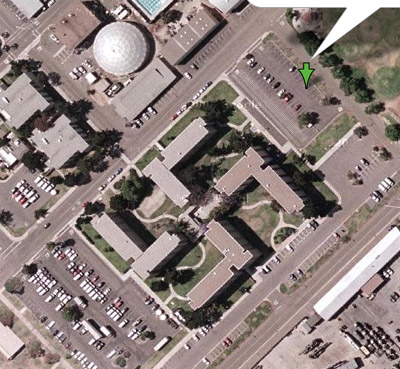 The first image to appear on the screen has to be an eye opener — an aerial photo of a US Navy barracks, at a base near San Diego, California. The building is laid out in the shape of a perfect swastika. Whether this is accidental or intentional, it has recently received considerable attention from an agitated public, who are demanding that the design of the building be altered.
The first image to appear on the screen has to be an eye opener — an aerial photo of a US Navy barracks, at a base near San Diego, California. The building is laid out in the shape of a perfect swastika. Whether this is accidental or intentional, it has recently received considerable attention from an agitated public, who are demanding that the design of the building be altered.
But my favorite example of a 20th century swastika has to be the handbook of the Boy Scouts of America. What on earth could be more western, more American, well intended or even more Christian than the Boy Scouts?
The swastika was proudly printed on the spine of “The Scout’s Handy Book” in 1913 (photo above right). The swastika was also widely circulated by the Boy Scouts of America as an honor badge for meritorious deeds and achievements and was also distributed door-to-door across America as a fundraiser.
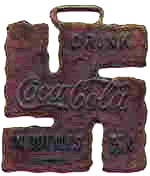 Why would the Boy Scouts have a swastika on their handbook? It certainly makes no sense at all, if you are one of those Americans who hasn’t been paying attention to the world for the past one hundred years. But it’s actually very simple, the swastika represented all things that a Boy Scout strives to achieve. Foremost for a Boy Scout is duty to God and country and then follows trustworthiness, loyalty, helpfulness, friendliness, courteousness, kindness, obedience, cheerfulness, thriftiness, bravery, cleanliness and reverence. In essence, in early 20th century America, the swastika symbolized for the Boy Scouts, all that a man can be. Quite a twist from how Americans and Europeans look at the swastika today.
Why would the Boy Scouts have a swastika on their handbook? It certainly makes no sense at all, if you are one of those Americans who hasn’t been paying attention to the world for the past one hundred years. But it’s actually very simple, the swastika represented all things that a Boy Scout strives to achieve. Foremost for a Boy Scout is duty to God and country and then follows trustworthiness, loyalty, helpfulness, friendliness, courteousness, kindness, obedience, cheerfulness, thriftiness, bravery, cleanliness and reverence. In essence, in early 20th century America, the swastika symbolized for the Boy Scouts, all that a man can be. Quite a twist from how Americans and Europeans look at the swastika today.


My other two favorite “all American” swastikas are the once very popular 1920’s Coca Cola good luck charm in the shape of a swastika [distributed free as an advertising gimmick] and the official team jersey of the Native American Basketball Team [1909] proudly displaying a very large swastika. And we don’t want to fail to mention the girl’s ice hockey team from Edmonton, Canada [1916] with the swastika smartly embroidered on their jumpers.
To see these photos and a wide selection of other swastikas in use in western countries during the 20th century and also swastikas dating back to antiquity, please view [Swastika and Cross]. Photos include the swastika Boy Scout good luck coins, swastikas on American Indian blankets, swastikas on US Army aircraft, swastikas on Arizona road signs, swastikas on Best Wishes and Good Luck cards for soldiers and even for new born babies, beer labels, pharmaceutical drug packaging, mid-west milk pitchers, the Swastika Hotel in New Mexico, royal family seals, Swedish swastikas, Russian swastikas, Greek swastikas, Roman mosaic swastikas, Samurai swastika flags, Bronze Age swastikas, first millennium Iranian swastika jewelry, Indus valley swastika seals, and more.
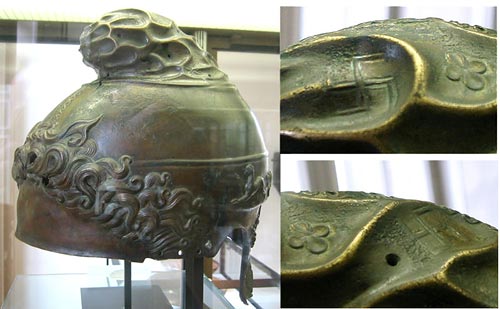 Going back in time, one is simply amazed to see the popularity of the swastika in the ancient world. Of course, being aware of the swastika’s popularity in Hindu and Buddhist cultures, we are not surprised to see the use of the swastika in antiquity in Asia, but would you expect to find the swastika in the Neolithic period of the Middle-east, going back to 10,000 BCE or even a swastika on a well preserved Greek war helmet from the year 350 BCE or a swastika etched in stone 1,100 years ago in Denmark? Probably not, but such artifacts do exist, and document the use of the swastika in hoary antiquity outside Asia. Most of these artifacts, after being excavated by archeologists, have again been buried in the basement achives of the world’s great museums. The Greek war helmet, however, is on display at the Cabinet des Médailles in Paris and the Snoldelev stone [Bronze Age swastika] is in the National Museum in Copenhagen, Denmark.
Going back in time, one is simply amazed to see the popularity of the swastika in the ancient world. Of course, being aware of the swastika’s popularity in Hindu and Buddhist cultures, we are not surprised to see the use of the swastika in antiquity in Asia, but would you expect to find the swastika in the Neolithic period of the Middle-east, going back to 10,000 BCE or even a swastika on a well preserved Greek war helmet from the year 350 BCE or a swastika etched in stone 1,100 years ago in Denmark? Probably not, but such artifacts do exist, and document the use of the swastika in hoary antiquity outside Asia. Most of these artifacts, after being excavated by archeologists, have again been buried in the basement achives of the world’s great museums. The Greek war helmet, however, is on display at the Cabinet des Médailles in Paris and the Snoldelev stone [Bronze Age swastika] is in the National Museum in Copenhagen, Denmark.
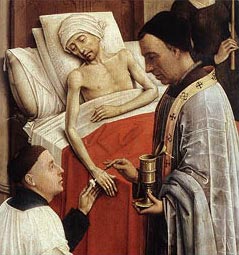 According to popular Christian belief, all pre-Christian civilizations of the world were pagan. One who believes in or worships more than one God, multiple incarnations or whatever, is by Christian definition a pagan and a pagan is damned to an eternal hell of torment and suffering. So, given the unholy status of a pagan [Greek, Roman, Celt, Hindu, Buddhist, Vaishnavas or otherwise], you would hardly expect to see a Christian priest, let alone a Bishop, a Pope or a Christian saint ornamented with pagan symbols, such as the swastika. Surprise, surprise — many examples of Catholic clergy wearing ornamental swastikas exist in classical European paintings. A good example is the painting [1445 CE] “The Seven Sacraments” by the renowned Rogier van der Weyden. Seen in the painting is a priest ministering to the sick and dying. His cloak is finely decorated with crosses and swastikas.
According to popular Christian belief, all pre-Christian civilizations of the world were pagan. One who believes in or worships more than one God, multiple incarnations or whatever, is by Christian definition a pagan and a pagan is damned to an eternal hell of torment and suffering. So, given the unholy status of a pagan [Greek, Roman, Celt, Hindu, Buddhist, Vaishnavas or otherwise], you would hardly expect to see a Christian priest, let alone a Bishop, a Pope or a Christian saint ornamented with pagan symbols, such as the swastika. Surprise, surprise — many examples of Catholic clergy wearing ornamental swastikas exist in classical European paintings. A good example is the painting [1445 CE] “The Seven Sacraments” by the renowned Rogier van der Weyden. Seen in the painting is a priest ministering to the sick and dying. His cloak is finely decorated with crosses and swastikas.
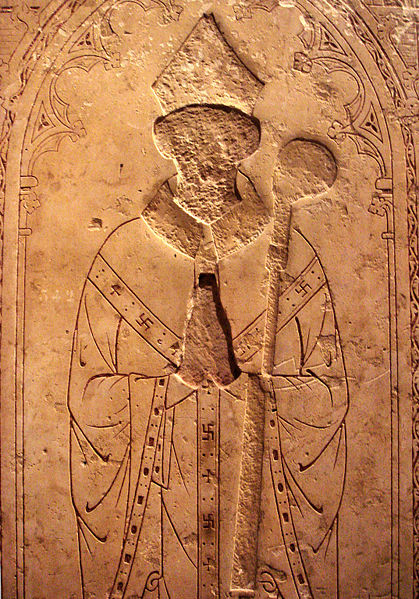 My favorite of these though is not a painting but the tombstone of Abbot Simon de Gillans [1345 CE] (picture on left) who has been immortalized in stone and is wearing robes ornamented with crosses, beautifully interspersed with swastikas. The Abbot is on display at the Musee de Cluny, Paris.
My favorite of these though is not a painting but the tombstone of Abbot Simon de Gillans [1345 CE] (picture on left) who has been immortalized in stone and is wearing robes ornamented with crosses, beautifully interspersed with swastikas. The Abbot is on display at the Musee de Cluny, Paris.
Our intention now is to have a brief look at the cross and its appearance from antiquity — its use being in partnership with the swastika and possibly having become a simplification of the swastika, as the swastika moved in ancient times from its Vedic homeland [the Indus Valley] across Persia to Europe and beyond.
One question that I am often asked is if the cross of early Christianity was invented as a result of the story of the crucifixion of Jesus? The answer is no. The cross of early Christianity was already in use in the Mediterranean world and beyond, long before the time of Jesus. The Bronze Age civilizations that flourished in Northern Europe as early as 1,800 BCE, used the centered cross of equal proportions [+] as a regular part of their symbolic script. It is this cross, of the Bronze Age, that was first adopted by Christianity.
Not only was the Bronze Age cross in use among the Europeans long before the advent of the Christian cross but the swastika also seems to have been a favorite of the Bronze Age Europeans. [For examples of Bronze Age symbols from Denmark view Swastika and Cross]

The Christian cross, as we know it today, does not come down to us from greater antiquity. By the cross of today, we mean the “Latin cross”. The Latin cross, when seen, immediately brings to mind, by design, the crucifixion of Jesus. This cross, symbolizing the crucifixion of Jesus, was not the original symbol of Christianity. The much earlier Bronze Age cross seems to have been around in Christianity from its very beginnings and came to Christianity thru the Greeks. The Latin cross [cross of the crucifixion] was a later invention.
It is certainly thoughtful to ask why early Christians didn’t adopt the cross of the crucifixion at the outset of the faith — why it took so long for them to evolve a cross that represented or symbolized the crucifixion of Jesus. The answer is simple, the early Christian Bible simply did not say that Jesus was martyred on a cross. It said he was nailed to a tree [an olive tree] or to a simple straight stake. Thus no crucifixion cross was necessary to invoke their remembrance of an event that didn’t happen. In other words, the crucifixion of Jesus didn’t happen the way later Christians decided to embellish the story.
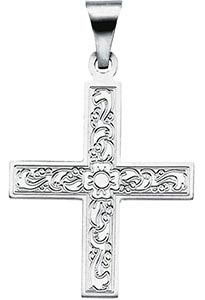
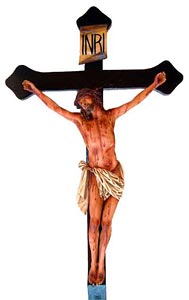 For early Christians, the Bronze Age cross or Greek cross as it is also known, did not symbolize or even suggest the crucifixion of Jesus. The cross, adopted by early Christians, represented to them the four directions in which the message of Jesus was destined to spread. The crucifixion style of cross, known to us today as the Latin cross, only came into Christianity at a much later time, during the Romanization of Christianity, from the fourth century onwards. And it is at that time that atrocities under the authority of the cross [the Latin cross] began to manifest against pagans and Jews.
For early Christians, the Bronze Age cross or Greek cross as it is also known, did not symbolize or even suggest the crucifixion of Jesus. The cross, adopted by early Christians, represented to them the four directions in which the message of Jesus was destined to spread. The crucifixion style of cross, known to us today as the Latin cross, only came into Christianity at a much later time, during the Romanization of Christianity, from the fourth century onwards. And it is at that time that atrocities under the authority of the cross [the Latin cross] began to manifest against pagans and Jews.
Strangely enough, among the oldest manuscripts to survive today from the early Christian period, there is a Gnostic document or codex containing the Gospel of Judas Iscariot from 280 CE. Much fuss has been made over the discovery of this ancient text, which is no doubt important to biblical scholars, but what no one seems to give much attention to is the fact that the document has two good size crosses drawn on it. One is the Bronze Age or Greek cross and the other is an Egyptian cross, commonly known as the ankh, the Coptic symbol for eternal life.
In the earliest Christian documents ever discovered, the Latin cross is nowhere to be found. Surely this says something, that is, if you have an interest in religious histories.
The Bronze Age cross, the Greek cross and the swastika are all ancient symbols existing long before the Christianization of the western world. The question is, did these two symbols, the swastika and the cross, simultaneously exist throughout the ages or is it possible that one was derived from the other, that is, the cross from the swastika? It will probably never be possible for us to know for sure, but the much wider use of the swastika across the ancient world certainly speaks in favor of the swastika being the origin of the concept of the cross. In any case it is certainly interesting and something to think about.
In our modern way of thinking, swastikas and crosses simply don’t mix. But that wasn’t always so. Then what changed our attitude toward the swastika? In a word, Hitler! Nazi Germany, Auschwitz, eleven million innocent men, women and children mercilessly humiliated, tortured and put to death during World War II — that is what changed the way western civilization thought about the swastika.
The Nazi war criminals have for the most part all been hunted down, tried in an international court of law and given their due. It seems the only culprit yet to face the final judgment for crimes against humanity is the swastika.
But before we allow the swastika to be convicted by the war crimes tribunal in the Hague and buried along side the much hated Nazis, we should remind the world that one other symbol has brought death, destruction and utter human madness to this world again and again thru the centuries — the cross. Yes, the cross, the holy of holy symbols of Christianity.
Even a brief study of world history shows the Christian cross prevailing over outrageous human injustices, inflicting pain, suffering, death and cultural genocide on millions of innocent people and cultures across the face of the earth. If you don’t know where to start, then start with the Romanization of the Church and the stamping out of all other religions in the empire. Even other groups of early Christians who held a different belief from the Roman Church were not spared. For example: In 1209, Pope Innocent III launched an armed crusade against Albigenses Christians in southern France. When the besieged city of Beziers fell, soldiers reportedly asked their papal adviser how to distinguish the faithful from the infidel among the captives. He commanded: "Kill them all. God will know his own." Nearly 20,000 were slaughtered -- many first blinded, mutilated, dragged behind horses, or used for target practice.
Then study up on how Christians, the fathers of anti-Semitism, persecuted the Jews. One of many examples follows: The Fourth Lateran Council in 1215 proclaimed the doctrine of transubstantiation: that the host wafer miraculously turns into the body of Jesus during the mass. Soon rumors spread that Jews were stealing the sacred wafers and stabbing or driving nails through them to crucify Jesus again. Reports said that the pierced host bled, cried out, or emitted spirits. On this charge, Jews were burned at the stake in 1243 in Belitz, Germany -- the first of many killings that continued into the 1800s. To avenge the tortured host, the German knight Rindfliesch led a brigade in 1298 that exterminated 146 defenseless Jewish communities in six months. Thousands of Jews met with torturous deaths.
Then check out the crusades and the accounts of innocent people put to death during the crusades in the Middle-east between 1095 and 1272. In one victory at Jerusalem, after the main battle was over, the crusaders put to death all the residents of the city, sum 40,000. In the words of a crusader chronicler who reported the victory to Pope Urban II, “The crusaders walked thru the streets of Jerusalem knee deep in the blood of the infidels!” When the carnage was over, the cross proudly fluttered in the wind above Jerusalem.
As Saint Bernard of Clairvaux declared in launching the Second Crusade in 1147: "The Christian glories in the death of a pagan, because thereby Christ himself is glorified."
Then if you have any stomach left for such matters, study up on the many inquisitions — Medieval, Spanish, Roman and Portuguese. But be prepared for the worst. The inquisitions began in 1184 and did not end until 1821. Scholars vary in their opinions regarding just how many people actually died in the inquisitions, but one should remember that human atrocities aren’t just measured in numbers.
The Spanish inquisition is one of those where the numbers are fiercely disputed, but suffice to say that even the lowest estimates are high. In Spain at the time of the inquisition, there were many Jews and Moors who had converted to Christianity to escape persecution. Inquisitors however sought those harboring their old faith. At least 2,000 Spanish backsliders were burned as a result. A total of 50,000 poor souls were tried for heresy. Fortunately some survived. Executions in other countries at the same time included the burning of scientists, such as mathematician-philosopher Giordano Bruno, who espoused Copernicus's theory that the planets orbit the sun. For this advance in science he paid with his life.
But all that fades into insignificance when one discovers the murder and devastation caused by the Spaniards in South America. Yes, the Aztecs did perform human sacrifice and certainly thousands of humans died at their hands. But by the time the Spaniards were finished with them, they had not just killed thousands of innocent people, they had destroyed a civilization and enslaved its remaining survivors.
Of course we can say that that was the doing of armies. Yes that is correct, it was the doing of an army just like Hitler’s, but the difference being that the Spaniards carried the cross and not the swastika.
For the sake of the record we might stop a moment and ask were did Hitler [a 20th century man] get the idea of being able to genocide a whole race of people? Well, he didn’t get any such thoughts from the Hindus or Buddhists but as for Christianity, genocide had been their calling card for almost 700 years.
If you are up for the journey of finding out what really happened under the cross, then check out the Protestant reformation and the witch-burning spree kicked off by Martin Luther in the 1400s [approx 60,000 women were burned alive in Europe alone]. Whole villages were exterminated. In one incident a Priest reportedly tortured untold thousands of women into confessing that they were witches who flew through the sky and engaged in sex with the devil -- then they were burned or hanged for their confessions. Witch hysteria raged for three centuries in Europe, in a dozen nations. Estimates of the number executed vary from 100,000 to 2 million. No one really knows how many or how few died. The witch-hunting craze was Christian madness at its worst.
And don’t forget to read the “Malleus Maleficarum, the Witches Hammer” a witch hunter’s handbook published in 1487 by two Dominican monks, Heinrich Kramer and James Sprenger and republished 28 times by the beginning of the 20th century. A Papal Bull issued by Pope Innocent VIII — thus giving the book its holy sanction, accompanied the book. Arguably the “Malleus Maleficarum” is one of the most infamous and demoniac books ever written. It outlines the process of identifying a witch, trying a witch, techniques of torture and punishments, lethal and otherwise.
It became so that anybody with a grudge or suspicion, very young children included, could accuse anyone of witchcraft and be listened to with attention. Anyone who wanted someone else's property or wife could accuse; any loner, any old person living alone, anyone with a deformity, physical or mental problem was likely to be accused. Open hunting season was declared on women, especially herb gatherers, midwives, widows and spinsters. Women who had no man to supervise them were of course highly suspicious. It has been estimated by Dr. Marija Gimbutas, professor of archaeology at the University of California, that as many as 9 million people, overwhelmingly women, were burned or hanged during the witch-craze. For nearly 250 years the Witches' Hammer was the guidebook for the witch hunters. Then one fine day, the Church woke up to the fact that there were no witches, had been no witches and the innocent had died in vain. The witch hunting was over, but with not so much as an apology.
Depending on whose figures you accept, one might argue that the numbers dead under Hitler’s swastika are certainly higher than those under the cross. But to this we simply reply that that is to be expected, considering the availability of guns, gas chambers and ovens that the Nazis had at their disposal. In the old days of Christian atrocities it was one life taken at a time, one head lopped off and then another or sometimes twenty burned at a time, but that kind of murder takes time. There was also the show of a trial [but not always] and the necessary tortures to be implemented to make sure the poor woman was actually a witch — these proceedings often dragged on for days and days. In fact death under the symbol of the cross dragged on for several centuries until it finally trickled to an end with the last inquisition coming to a close in India in 1812. The inquisition in India lasted 248 years, from 1560 until 1812. At least Hitler’s madness was over within a decade.
All sarcastic remarks aside, if the European Union intends to ban the swastika because of its misuse by the Nazis, then they should ban the cross as well for its misuse by Christians.
Better yet however would be to allow both these ancient symbols a continued life of their own in a free world where religious convictions are an individual’s free choice and not the dictates of the state.
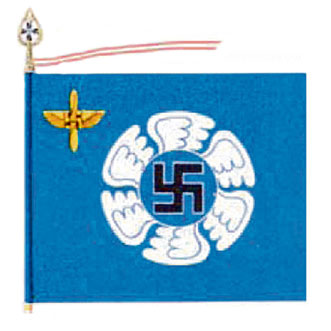 |
 |
| Finish Air | US 45th Infantry |
 |
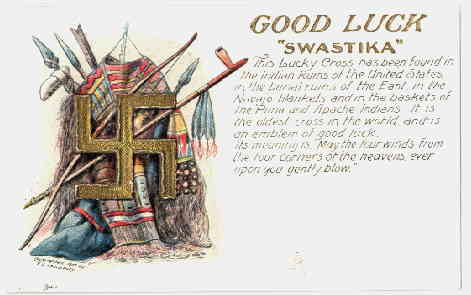 |
| Sioux Chief | American Indians Good Luck Swastika |
 |
|
| American Indian Blanket | |
 |
 |
| Canadian Drug Company | Arizona Highway Marker |
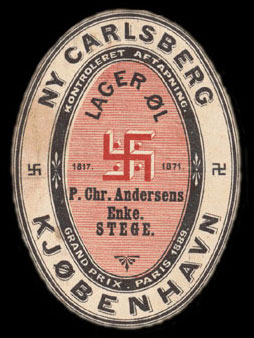 |
 |
| Carlsbery Beer 1871 | Catholic Priest |
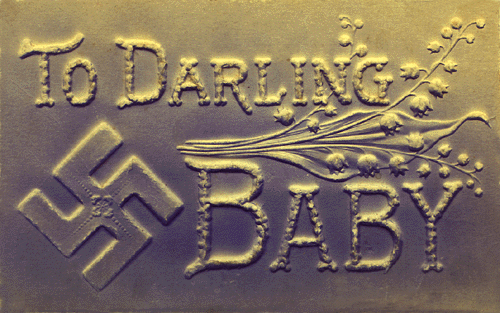 |
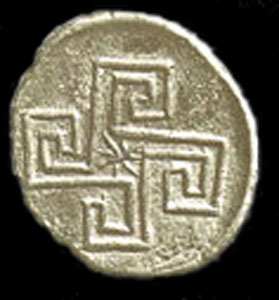 |
| Darling Baby USA | Crete Coin 1000 BCE |
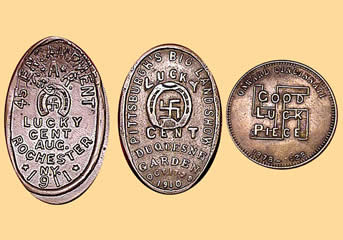 |
|
| US Coins | |
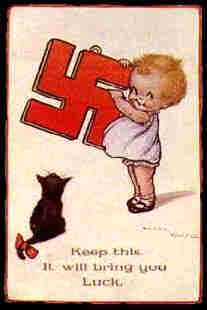 |
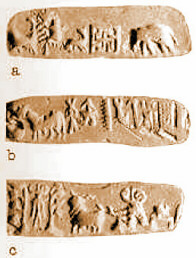 |
| Luck for Baby | Indus Swastika |
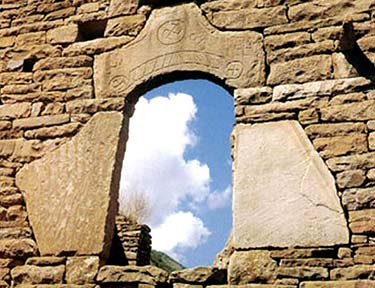 |
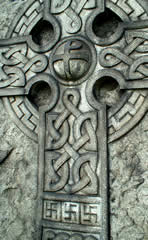 |
| Cheknya Ruins | Celtic Cross |
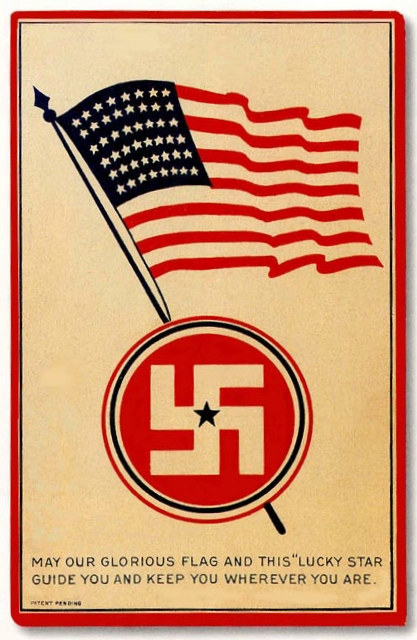 |
 |
| US Swastika Flag | Indiana Bank USA |
 |
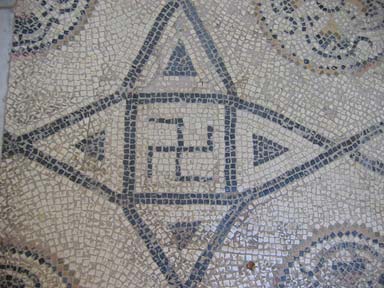 |
| Mid West USA Milk Pitcher | Roman Frescos |
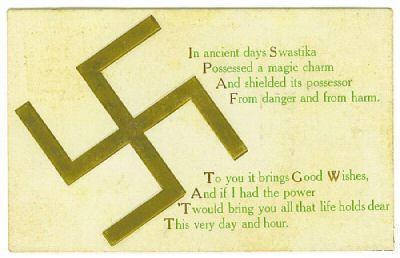 |
|
| Postcard Swastika | |
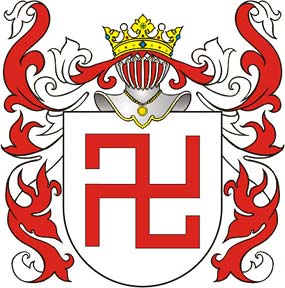 |
 |
| Serb Family Seal | Matil de Moisant - Pilot |
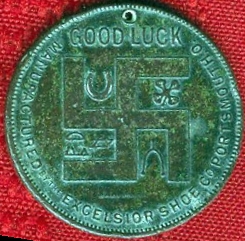 |
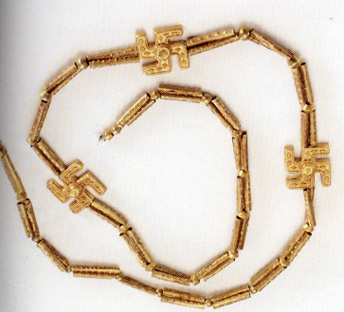 |
| Swastika Boy Scout Shoes | Iranian Swastika 1,000 BCE |
|
|
| Samurai Swastika | |
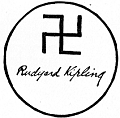 |
 |
| Rudyard Kipling Swastika | Coca Cola Swastika |
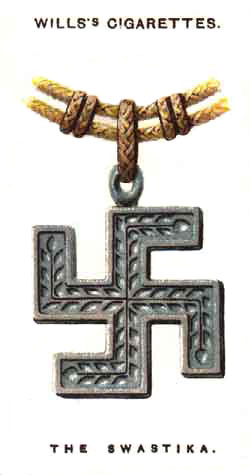 |
 |
| Will Cigaretts | Swastika Japan |
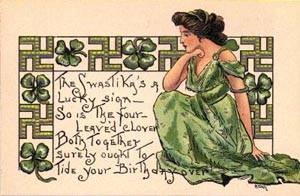 |
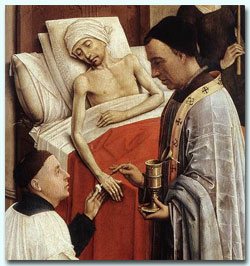 |
| Swastika Irish Four Leaf Clover | Priest Ministering to Dying Man |
 |
|
| 1941 US Army Boeing | |
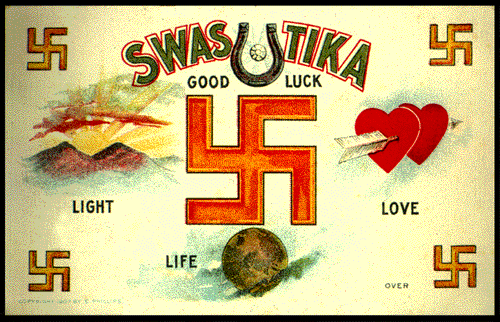 |
|
| USSR Socialist Swastika 1917 | Good Luck Swastika |
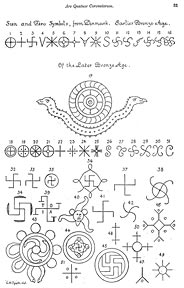 |
 |
| Denmark Bronze Age Symbols | Swastika Hotel - New Mexico |
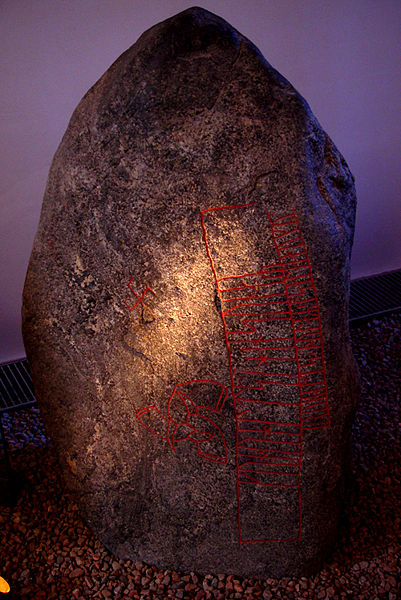 |
|
| Runstone Snoldelev Denmark | |





